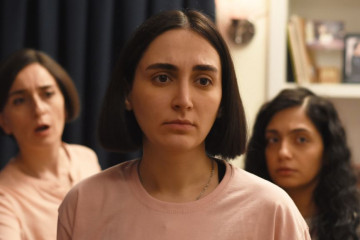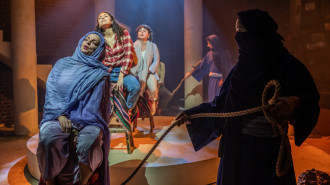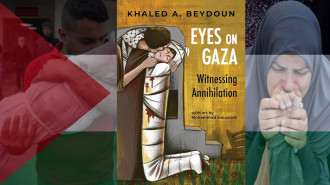

After celebrating its world premiere at the 77th Cannes Film Festival and receiving the Special Jury Award, Iranian filmmaker Mohammad Rasoulof’s widely discussed feature The Seed of the Sacred Fig was presented in the Piazza Grande section of the 77th Locarno Film Festival. This section is famous for screening selected films at the world’s largest open-air cinema venue, which is designed to seat 8,000 spectators.
The director has been having issues with Iranian authorities since 2010 for repeatedly violating censorship regulations with his films. Since then, he has been given three prison sentences as well as bans on working and leaving the country. Following the latest Cannes selection, the cast and crew were interrogated and banned from leaving Iran, while Rasoulof was pressured to withdraw the film.
Subsequently, he was sentenced to eight years in prison, flogging, and property confiscation, but he managed to flee Iran with some of his crew members. After a gruelling 28-day journey, he reached a German consulate, obtained a temporary travel document, and eventually managed to attend the red carpet ceremony in Cannes. His most recent public appearance was in Locarno, where he publicly shared details about his current situation in an interview conducted by the festival team.
The Seed of the Sacred Fig is Rasoulof's tenth film, following other notable politically rebellious works. These include Man of Integrity (2017) — the Un Certain Regard top prize winner at the 70th Cannes Film Festival — which exposes widespread corruption, nightmarish bureaucracy, and severe oppression within Iranian society. Another of his notable works is There Is No Evil (2020), a critique of capital punishment in Iran, which received the Golden Bear at the 70th Berlin International Film Festival in the director’s absence.
His latest work continues in this vein: the title references a fig species that grows by encircling and eventually suffocating another tree, thus symbolising Iran's theocratic regime. Rasoulof's script focuses on a middle-class family with two adolescent daughters, in which the father Iman (Missagh Zareh), a devout attorney, is appointed as an investigative judge in Tehran's Revolutionary Court, receiving a higher income and a more spacious apartment.
However, amid widespread protests, he discovers he was chosen not for his legal expertise but to endorse pre-determined rulings, including executions, without evaluating evidence. Forced to stay anonymous, he must conceal information from his family, keep his daughters off social media, and manage a government-issued gun, despite being ill-equipped to handle it.
As nationwide protests escalate — a timely reflection on the current ongoing situation in the country, including actual live stream videos — Iman is forced to sign countless death sentences daily, while his daughters, Rezvan (Mahsa Rostami) and Sana (Setareh Maleki), secretly follow the unrest and clash with him over their feminist views.
After their friend Sadaf (Niousha Akhshi) is injured in a protest, the women hide her in their home, deepening Iman's mistrust. The culmination point arrives with the disappearance of the gun that threatens Iman’s professional integrity. Hence, he starts suspecting and interrogating his family, while taking them out of town in an attempt to extort confessions.
With each of them confronting raw fears and uncompromising viewpoints, the once fierce verbal confrontation escalates into a life-and-death physical struggle.
A key figure in the family dynamic is the mother, Najmeh, portrayed by actress Soheila Golestani, who had previously protested against the mandatory hijab and was arrested for her activism — a real-life detail that adds to the film's notorious reputation in the eyes of Iranian officials.
Initially siding with the father as the guardian of traditional family values, Najmeh intuitively sympathises with her daughters and gradually aligns with their growing rebellion. Her character serves as an arbiter at the centre of the conflict, maintaining crucial dramatic tension while ultimately tipping the balance when the time for resolution arrives.
Despite the film's undeniable relevance, given the turbulent political situation in Iran, its cultural and aesthetic authenticity is somewhat questionable.
Connoisseurs of Iranian New Wave cinema — such as Forough Farrokhzad, Abbas Kiarostami, and Jafar Panahi, who has faced legal persecution, house arrest, and imprisonment while continuing to make films in Iran despite a ban — are familiar with a unique and subversive cinematic language. This language is deeply rooted in the ancient tradition of Persian poetry and the golden era of contemporary Persian literature from the 1950s and 1960s, shaped more by local influences than by global ones.
In this context, Rasoulof’s cinematic approach appears overly conventional and tied to mainstream genre structures.
The first half of The Seed of the Sacred Fig resembles a TV family drama, primarily due to the prosaic framing, shooting angles, and tedious focus on details within an otherwise predictable narrative. It then shifts into a psychological thriller reminiscent of Stanley Kubrick’s The Shining — the familiar story of a devoted family man who descends into madness, here driven by the state's repressive machinery.
With its overt opposition between feminist views and domineering patriarchy, and lacking a nuanced portrayal of the relationships between the father, husband, and the three women in his family, The Seed of the Sacred Fig ultimately feels tailored to Western tastes, offering clear messages that simplify its themes.
As a result, the Western audience loses out the most, missing the chance to immerse themselves in an essentially different environment recreated with its inherent complexity and unique means of expression. Instead, an “adapted” version is presented that, despite its important content, leans more toward entertainment than genuine artistry.
Mariana Hristova is a freelance film critic, cultural journalist, and programmer. She contributes to national and international outlets and has curated programs for Filmoteca De Catalunya, Arxiu Xcèntric, goEast Wiesbaden, etc. Her professional interests include cinema from the European peripheries and archival and amateur films





 Follow the Middle East's top stories in English at The New Arab on Google News
Follow the Middle East's top stories in English at The New Arab on Google News


